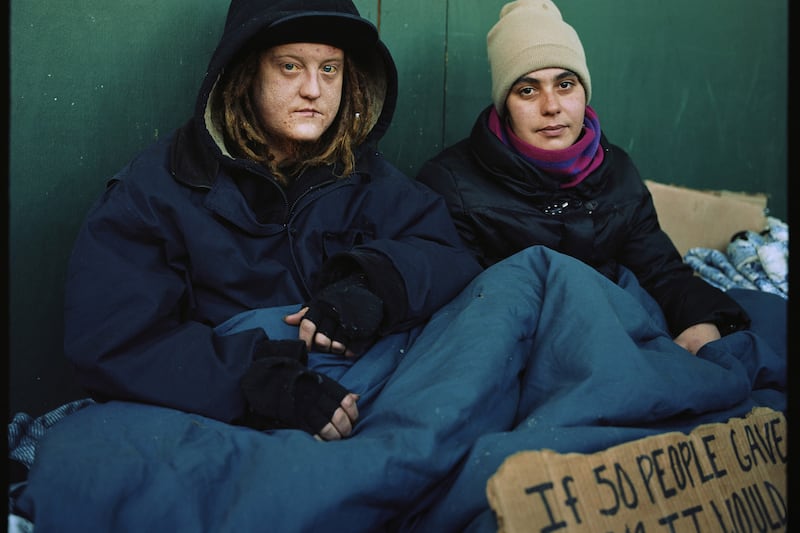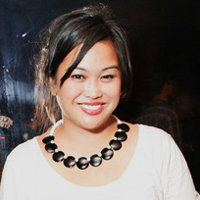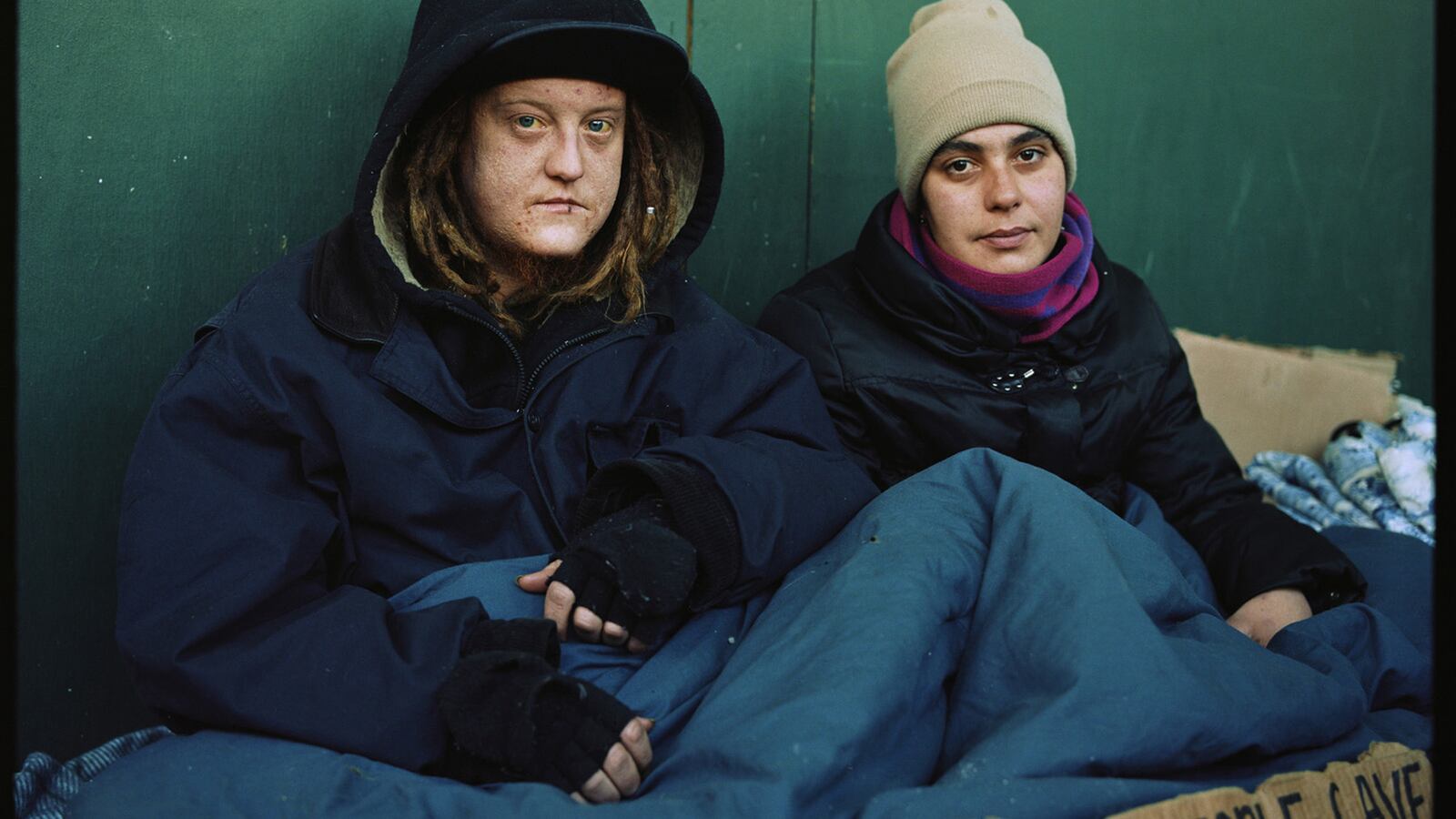The New York City homeless rate is on the rise. Last year a report by the U.S. Department of Housing and Urban Development stated that the homeless population in the Big Apple in 2013 was 64,060, up 13 percent compared to the 56,672 in 2012. “I noticed more homeless people than ever,” says artist Andres Serrano, who, last October, began paying $20 to collect the signs they held asking for money for a project called Signs of the Times.

“I felt it was important for me to do this in October because it was sort of the end of the Bloomberg administration and the beginning of a new mayor’s term, and it was saying to me it was Bloomberg’s way of saying goodbye to the city of New York, leaving us with all these homeless,” Serrano says.
That project wasn’t the first time Serrano has documented New York’s homeless population. Nearly 25 years ago, in 1990, the artist took portraits of those who lived on the streets, bringing a backdrop and flash equipment to create a makeshift outdoor studio at their locations for a series called Nomads that was later exhibited at the Denver Art Museum. This year, the artist revisited Nomads for a public art project with More Art called Residents of New York. The resulting collection of large scale-portraits of the homeless will be on display throughout the city at the West 4th Street subway station, around Washington Square, Judson Memorial Church, and various telephone booths, among other locations, from May 19 to June 15.
GALLERY: Andres Serrano Documents the “Residents of New York” (PHOTOS)

For this series, Serrano eschewed the backdrop and flashes that he used in Nomads. “This time, I decided to make the streets my studio, and so I got my 4X5 camera,” Serrano says. “I got an assistant for the camera, and I treated the street as my studio.” To find his subjects, Serrano and his assistant operated the same way the homeless do: they walked the city streets during January and early February—one of the coldest winters in New York’s history—paying their subjects $50 and, if they wanted, a print of their photograph. “I was right there with them,” he says. “It wasn’t easy for them, or for me. It was a lot harder for them because we could get coffee, we could take breaks, after eight or six hours, we went home to our beds. They didn’t.”
Although Serrano, a native New Yorker, has never been homeless himself, he says he can relate because he used to be a drug addict and drug dealer who made his living on the streets of New York in the ’70s. “I’ve walked the streets, I’ve lived the streets, not as a homeless person, but as another kind of person, a street person, so I don’t feel that removed from the streets,” he says.
Around 35 portraits of New York City’s homeless will be on view, like that of a man named Red, who passed away after Serrano took his photograph. “I took the kid’s last picture, he was probably in his twenties,” Serrano recalls. Another image shows a woman named Stephanie Green, looking sad in a red scarf and hat, while another depicts Jason Brown, a man in a gray parka with a black cup in front of him for donations. “They’ve got stories, they’ve got baggage, they’ve got hopes, they’ve got dreams, and they’ve got trauma,” Serrano explains. “All of those things I see it in their faces, and I think anybody looking at it will see the same thing.”
While Serrano hopes Residents of New York will bring attention to the city’s homeless problem, he doesn’t consider himself an activist. “I’m an artist,” Serrano says. “I’m not a crusader, so I’m not trying to tell you to give money to the homeless, but I’m not trying to make you a better person, because that’s up to you. I just want to show you what I found. I just want to show you what I see on the street, and I want you to look at these people close up, because you might not see them, even though they’re right in front of your face.”
Residents of New York will be on display in New York through June 15. For more information, visit moreart.org.






